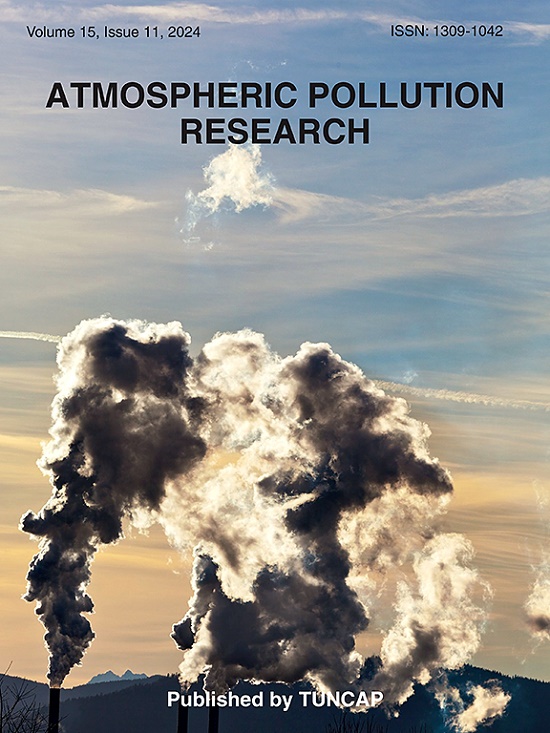Reconstructing top-down global black carbon emissions using remote sensing and models
IF 3.5
3区 环境科学与生态学
Q2 ENVIRONMENTAL SCIENCES
引用次数: 0
Abstract
Black Carbon (BC) is both an absorbing component and air pollutant that significantly impacts environment, climate, and human health. Currently, the monitoring of BC emissions relies primarily on bottom-up inventories, which often lack spatial and temporal validation or verification from satellite-based observational platforms. This gap limits our understanding of BC's concentration and variability over time and space. This study reconstructs a BC emission inventory based on separate bottom-up and top-down Kalman Filter estimations from 2002 to 2009 yielding a variable enhancement factor in different areas. EOF (Empirical Orthogonal Function) is employed to identify 9 unique BC source regions contributing over 77 % of the variance, in alignment with climatological patterns of NO2 and UVAI (Ultraviolet Aerosol Index) observations during this period. Simplified inversion emission estimation provides a medium to high confidence inventory that effectively captures both geographic and temporal variations of BC across different regions and percentiles. The emission difference between our inversion and a priori estimation is not uniform, with BC emissions globally underestimated by a factor of 1.8–4.0. Urban and rapidly developing regions including Europe, China, United States, and India are highly underestimated in the a priori inventory.
利用遥感和模型重建自上而下的全球黑碳排放
黑碳(Black Carbon, BC)既是一种吸收成分,又是一种空气污染物,对环境、气候和人类健康产生重大影响。目前,对碳排放的监测主要依赖于自下而上的清单,往往缺乏来自卫星观测平台的空间和时间验证或核实。这一差距限制了我们对BC浓度和随时间和空间变化的理解。本研究基于自底向上和自顶向下的单独卡尔曼滤波估计重建了2002 - 2009年的BC排放清单,在不同地区产生了不同的增强因子。利用经验正交函数(EOF)确定了9个独特的BC源区,贡献了超过77%的方差,与此期间NO2和UVAI(紫外线气溶胶指数)观测的气候模式相一致。简化的反演发射估计提供了一个中等到高置信度的清单,有效地捕获了不同地区和百分位数的BC的地理和时间变化。我们的反演和先验估计之间的排放差异并不均匀,全球BC排放量被低估了1.8-4.0倍。包括欧洲、中国、美国和印度在内的城市和快速发展地区在先验库存中被严重低估。
本文章由计算机程序翻译,如有差异,请以英文原文为准。
求助全文
约1分钟内获得全文
求助全文
来源期刊

Atmospheric Pollution Research
ENVIRONMENTAL SCIENCES-
CiteScore
8.30
自引率
6.70%
发文量
256
审稿时长
36 days
期刊介绍:
Atmospheric Pollution Research (APR) is an international journal designed for the publication of articles on air pollution. Papers should present novel experimental results, theory and modeling of air pollution on local, regional, or global scales. Areas covered are research on inorganic, organic, and persistent organic air pollutants, air quality monitoring, air quality management, atmospheric dispersion and transport, air-surface (soil, water, and vegetation) exchange of pollutants, dry and wet deposition, indoor air quality, exposure assessment, health effects, satellite measurements, natural emissions, atmospheric chemistry, greenhouse gases, and effects on climate change.
 求助内容:
求助内容: 应助结果提醒方式:
应助结果提醒方式:


